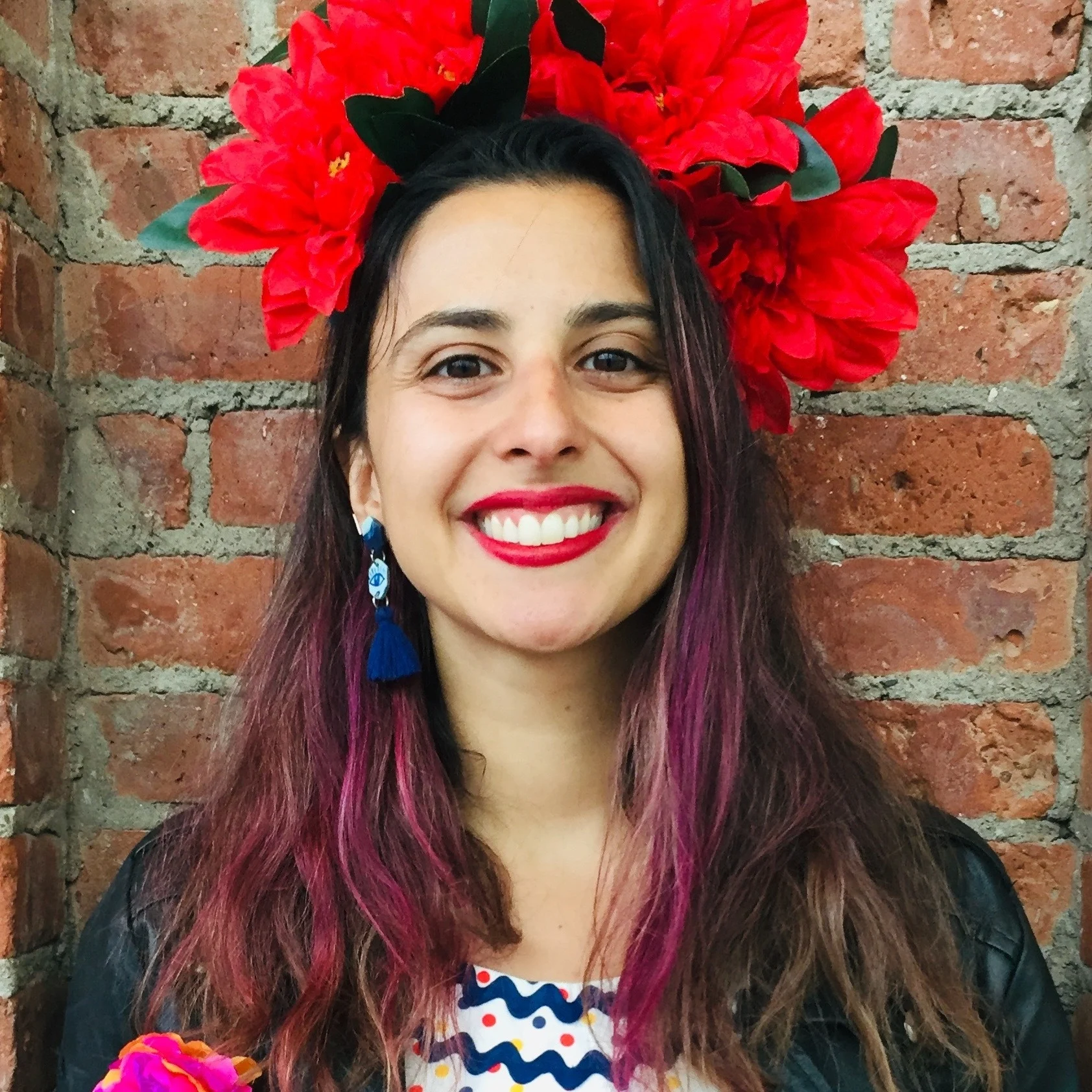Stay in the know
All our latest podcasts delivered right to your inbox.
Heath Howes has built hundreds of custom horse saddles for riders. Growing up, he had trouble with reading and writing and struggled with ADHD. Hear how he found his strengths in art and three-dimensional thinking. And get his advice on how to find a career working with your hands.
Listen in. Then:
Watch Heath working on a horse saddle on his YouTube channel.
Check out a video of a jeweler with dyslexia who found his strengths.
Episode transcript
Eleni: From the Understood Podcast Network, this is "How'd You Get THAT Job?!," a podcast that explores the unique and often unexpected career paths of people with learning and thinking differences. My name is Eleni Matheou, and I'm a user researcher here at Understood. That means I spend a lot of time thinking about how we find jobs we love that reflect how we learn and who we are. I'll be your host.
So on this show, we like to talk to a wide range of people with different jobs and careers. In that spirit, I think today's guest would have felt right at home in the Wild West as he does in the modern city. Heath Howes is a saddle maker. He had challenges reading as a child and also has ADHD. Welcome to the show, Heath.
Heath: Well, hello. Thank you. Thank you for having me.
Eleni: So you're a horse saddle maker and also a leatherworker. What does a saddle maker do?
Heath: I am a saddle maker. I make saddle trees. My job is putting leather on a hard form that is called a saddle tree. And we adapt it to shape for a horse so that the rider can be suspended on that animal and not get thrown off and not slide off, but also be able to work on that animal and rope cattle and other animals off of it. And that is the saddle construction. I've probably made about 500 saddles and 1,200 saddle trees.
Eleni: And can you actually explain what a saddle tree is?
Heath: Traditionally, a saddle tree is four pieces of wood, specifically shaped and then mounted together. A fork, a cantle, and two bars. Usually it's bound by rawhide. What I make it in is a high-density polyurethane, and I put it in a mold and then fill that. You form the tree to match the horse, the back of the horse, on the bottom side. And then you match the rider when you're constructing the saddle on the top side. The thing that I do for the majority of my job is making the saddle trees, and I send them off to saddle makers.
But when I can get a chance, I make the saddles themselves, and I do custom ones. So I'll end up hand tooling or what we call carving, where you take a swivel knife and break the grain or cut the grain of the leather. What everybody wants is the thing that takes the most time, which is hand tooling. And you take these little stamps that are like an eighth of an inch by an eighth of an inch, all the way to like a half inch by half inch. And you can make flowers, you can make human faces, you can make portraits, dogs, cattle, and stuff like that, or huge geometric patterns. And anything you can think of, you can pretty much put into leather. So what I do is just dress those trees and then make belts and other things like that.
Eleni: You mentioned often people are looking for custom saddles. I don't know if there's anything else that you'd like to add about why people are looking for custom saddles, like why that's important and, like, what are the kinds of things that they are looking for when they seek out a custom saddle?
Heath: You know, this type of work, ranch work, is very hard on horses. So you want something that's going to be comfortable for them and yourself throughout the day so you can continue to work. And longevity is what we're looking for now. So you want a custom saddle to allow you to work not just all day long — or days being like maybe eight hours at the easiest, you know, 14 hours from dusk till dawn — but all the way into your 70s.
For people that want a comfortable ride, because it's hard on your joints, it's hard on your hips, it's hard on your knees and your ankles. And so my dad's 70 and is still able to ride because of the production method that we have, you know, so we can relieve the joints with a custom saddle.
Eleni: That's super cool. That's something I've never thought about.
Heath: Well, who does? You just get on a horse, right?
Eleni: You mentioned, like, some people ask for specific imagery or carvings. Do you have a story in mind or maybe the strangest request that you've had?
Heath: I didn't get this request. It was one that I heard from in the shop, my dad's shop. And my dad's name is Mark Howes, and his shop is the Double H Ranch Saddle Shop, which is the shop that I learned and grew up in saddle making and leatherwork. A gal came in, and she was very interested in a fully floral carved saddle. And she had a particular flower set that she wanted. And when it's floral, it's the petals and then the vines and the leaves that go with it.
She wanted a little animal on it too. She wanted a tree frog, and not just any tree frog. There's a specific type of tree frog that she wanted. And she starts explaining it. My dad's like, "Well, OK, so what's this, like a toad, like a bullfrog?" And she's like, "No, no, no. A tree frog." He's like, "If you could just show me a picture." She's like, "All right, I'll show you the image." So she pulls up her shirt. And she's not wearing a bra and she has two tree frogs tattooed to her breasts. And she's like, "Those, I want those frogs on my saddle." And he was like, "I think I can do that."
But anyway, yeah, that was the most interesting story of someone who was like, "I want this." I just don't know.
Eleni: That is very interesting. Cool. So what does a typical day look like for you? And what is your favorite thing about the process or about the work that you do?
Heath: For my day, I have to structure it. I start with the small projects first, the ones that I don't like doing, and it's easier to pile that on at the beginning of the day with the small stuff, because then you can get through it.
So sweeping, prepping, cleaning, and there's a lot to clean when you're messing around with plastics in its liquid form, because as soon as it hardens it cases out, what's cool is like, it's like living sculpture. It looks like just a drip all over the place, but it's hard. With COVID and everything going on right now, I've had to release the two guys that worked with me that I hired on.
And for me, my mind, it was easier to talk out the process with individuals in the shop. Now it's just me. So I've got to, like, start music or a podcast or something like that. And I have something that my subconscious can work on. Otherwise my processes are just thrown out the window because I tend to overthink if I don't have something that my mind is working on.
Eleni: So you said it was actually helpful to you to verbalize what your day would look like when you had colleagues around. Do you want to talk a little bit about why that's helpful to you and perhaps how that might relate to some of your learning and thinking differences?
Heath: For me, it's a systematic approach to things. So I talk about it, but I guess with the ADHD, there's some compulsionary issues, but I'm also an oral learner and teacher. It's easier for me to sometimes explain something, but I gotta get it out first. You know, if I don't know what I'm doing, I have to talk about it. I'm, like, "I'm going to go do this thing; I'm going to go put this on," because if you have a good idea, say it out loud. And if it's still a good idea, then go do it. And you're like, "Oh, no, this is great idea." But when you say it out loud and it sounds horrible or awful, then just don't do it. "I said it now, and that is something bad. I'm just not going to do that."
And with my process, it does change, especially now I've had to reconfigure an entire process because since it's only me, I can only make one tree a day and that mistake ratio is greater. So if I don't talk about it and think about the next step of my process, then I may screw up a tree, which is $400 a piece for me. So that's the entire day. I'm, like, oh well, that day's scrapped, but it does two things: Solidify it, the process in your mind, and assurance — confidence during the day. If you feel more confident about what you're doing every day, then showing someone else or telling someone else or doing something that's very new to you is not as daunting.
Eleni: So we haven't really talked about like what your differences are. So could you describe, like, how you identify or, like, perhaps how you would describe your own learning and thinking differences to, like, a friend or a family member or a colleague, and how maybe it actually shifts depending on who you're talking to?
Heath: Yeah. I have had better success at talking about my issues with my friends rather than my family. And I'm not certain that that's going to be for everybody. It just happens to be, my folks tend to think that whatever difficulties I have has a bearing on how they taught me or my upbringing. And so I don't tell my folks that.
I was just recently diagnosed with ADHD. Although I know that I have had it for a long time because the struggle has been real. It's just when I was in school and I broached this subject with my folks the first time, and I was, like, "I think I have that." And my mom's, like, "Even if you do, there's ways around it, you don't have to take it, because I don't want you to take anything chemically."
I'm, like, OK. And that was one conversation many, many years ago. And that was it. That was the end of it. No bringing it back up. But I can talk to my friends and say, I think this is a problem. So when they suggest books to me, you know, when I was younger, it was, "Is it entertaining or is it educational?" Because if it's educational, I will struggle through it, most because of the larger words; because as I read, I don't read left to right. I look at the center of a word and then assimilate the letters that way. Is it something I'm familiar with? Like, is that word recognizable as it is just physically written?
Otherwise it doesn't look right. And then, like, fonts usually throw me off. If it's the same word and it's written in a different font and it doesn't look right, I won't know the word. I'm like, Tucson. What is that? Or I'll say "Tuckson." I don't know. That's still Tucson. It's still spelled Tucson. You know, but for me, I just recognize a word like a face. Is your face familiar? Is that word familiar and then reading right to left, I just assimilate the idea of "What is the sentence trying to tell me?" But now, I mean, it's easier nowadays. I can read books if it is exactly a book that I want to read. Writing, for me, even though I know what it is I want to say, my mind is still going too fast and my hands are too slow. Just can't do it. It takes me a full day to write a page of thought. I don't understand why, for me, I just can't do that. But I know that some individuals can put those ideas together and then they see that idea and then they can run with it and they can just type it and go along. I knew that I wasn't able to sit down and write and type at a computer; it just takes me forever.
I was like, even though these things are fun, I cannot do it. Now, the one thing I was able to do, and this is the weirdest thing, in my creative writing class. It came to our poetry writing. One of the things we had to do, and I was like, "Oh, poetry."
And the teacher was like, "Just write in freeform." I was like, "Crap." OK. Freeform, not going to do it for some reason. My mind needs a type of structure. It needs sequence. I decided to look into French strict form. French forms are some of the hardest in order to follow. That was easy for me. The rhyming schemes, well, you just got to figure out what's going to happen, but I can follow that. I can follow that system, but I can't do freeform poetry to save my life.
Eleni: So you mentioned that you were diagnosed later, and you know, when it came up when you were younger, your parents kind of dismissed it or didn't allow you to pursue that further. Do you think that your differences, like, influenced either your interest or where you decided to go with your career, even without having that diagnosis?
Heath: Absolutely. When I was learning in school, I would keep at least a notebook with me that wasn't for writing. It was an art book, but for the most part, it was drawing circles while the teacher talked, or triangles, or Xs, and things like that.
But it would just be a form of making the muscles do something, the subliminal mind do something. And, uh, the first few times I did that, my teachers did not know, and they thought I was being disruptive. And I was like, "How am I disrupting you by drawing? You know, anybody who's taking notes is still going to be scribbling on a page, but you're upset that, like, there's circles happening." There's a disconnect there. They think I'm not connecting to them. And I was like, "This is for me to listen to you while not like losing my s*** in class," you know?
So, the tangible arts became easier. Drawing became easier. So, as I went into specific classes of education, I did art class, a sculpture, and those came easy; three-dimensional thinking became easy. So, I did architectural design while I was in high school. So, model building — part of that class was using CAD programs as they first came out. I could see all of that because my hand was already building those things. But because of the limitations, I wasn't able to just sit and listen. I had to do something and to clear my mind, you know, so I could pay attention.
So making an art piece at the end of the day, and then rather than make model kits, I just decided to start making models myself, carving woods and pieces like that into something else. Which leads to what my dad was already doing. I just, you know, would do that every now and then, but I got into construction and art and everything, and that went into theater, like actual theater, all the backstage stuff, lighting, set painting, prop making, and things like that.
All the tangible stuff that you don't think about when you're watching a movie. Being able to do that and look at it and see things three-dimensionally and see it as someone's describing it to me, someone's like," I want it like this," and they're very vague, but I can see it three-dimensionally already in my mind and then do a partial draw or a thumbnail sketch of it.
Eleni: Like, in terms of your story around the types of things that you are interested in, it sounds like, you know, right now you're working with your hands and that seems to be like a big part of what you were drawn to in terms of sculptures and creating 3D objects. And you mentioned earlier, working with plastic and working with leather, I'd love to hear more about what you really enjoy or not about working with these materials. And then also, like, how this process, like, engages your other senses. You mentioned bringing music into it, but I'm wondering, like, about texture and scent and, like, other sounds.
Heath: When you're working with leather, there is a term, "gaining your hands." The leather is a bio material. Once it's tanned, it's not all hard. You still have armpits. You still have neck. You still have stomach. You still have these areas where this very flexible bilateral cell structure makes for weaker points, when you want stronger leather pieces.
Now, the thing is when you're trying to shape leather into these convex and concave areas where there's four different shapes and sides that it all has to go on, some of that knowledge you do need to utilize, but reading the leather as it's just a side of hide, just looking at it, you don't know. Touch the leather. This guy that used to work for my dad would be like, "Make love to the leather," but you're still using your hands to see how that structure is moving because you still can't, if you're looking at it, you still don't know what it does. Does it feel boardy? Does it move with your hands? But there's a ton of smells go in there. And plastic, sometimes stuff reminds me of cinnamon, which is weird because none of it is chemically balanced, chemically made to smell like cinnamon or chocolate or vanilla.
Eleni: So Heath, uh, many of our listeners didn't grow up on a ranch, um, but you know, they might be interested in saddle making or leatherwork, or just like some of the other hands-on work that you mentioned, like sculpture making, prop making. How do you suggest that people get into this type of work?
Heath: If someone's wanting to get into saddle making, find a professional. There's a lot of videos out there on how to carve and stamp leather on YouTube. And I myself just started one for specifically saddle making, but there's a few YouTube videos out there for individuals that want to find out more. If you want to try making something with your hands and you want to try clay, buy some modeling clay and just do some basic figures, a full human form. It does not have to be detailed, but just building a body, and then build a head.
If you want to start a three-dimensional thought, start with models, car modeling, or even those 3D puzzles, because you want to fulfill your creativity and curiosity. Just do a 3D foam puzzle. Watercolors are very, very cheap. Paints are very, very cheap. You can get them at any big block store, but the thing is to start.
No matter how confident or lackluster you are in your abilities. You're like, "Well, I have a hard time drawing stick figures." It doesn't matter. Just draw the stick figure, then add more to that stick figure. But for those individuals that want to start, just start.
Eleni: Thank you so much for chatting to me.
Heath: Thank you so much. It's been wonderful talking to you and telling everyone about my story.
Eleni: This has been "How'd You Get THAT Job?!," a part of the Understood Podcast Network. You can listen and subscribe to "How'd You Get THAT Job?!" on Apple, Spotify, or wherever you get your podcasts. And if you like what you heard today, tell someone about it. "How'd You Get THAT Job?!" is for you. So we want to make sure you're getting what you need. Go to u.org/thatjob to share your thoughts and to find resources from every episode. That's the letter U, as in Understood, dot O R G, slash that job.
Do you have a learning difference and a job you're passionate about? Email us at thatjob@understood.org. If you'd like to tell us how you got THAT job, we'd love to hear from you. As a nonprofit and social impact organization, Understood relies on the help of listeners like you to create podcasts like this one, to reach and support more people in more places. We have an ambitious mission to shape the world for difference, and we welcome you to join us in achieving our goals. Learn more at understood.org/mission. "How'd You Get THAT Job?!" is produced by Andrew Lee and Justin D. Wright, who also wrote our theme song. Laura Key is our editorial director at Understood. Scott Cocchiere is our creative director. Seth Melnick and Briana Berry are our production directors. Thanks again for listening.
Host
Eleni Matheou
leads user research for Understood. She helps Understood to center its work on the lived experiences and voices of people who learn and think differently.
Latest episodes
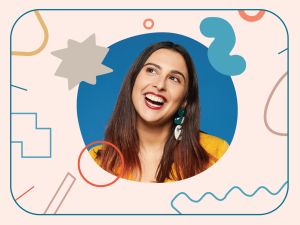
June 28, 2023
In the series finale of How’d You Get THAT Job?!, host Eleni Matheou unpacks what we’ve learned about how people thrive at work.

June 14, 2023
Nathan Friedman is the co-president and chief marketing officer of Understood.org. And he has dyslexia and ADHD. Learn how he got into the C-suite.
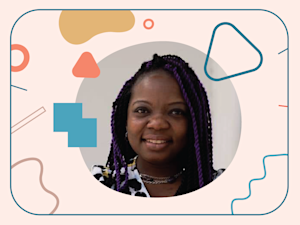
May 31, 2023
Dr. Loucresie Rupert is a child, adolescent, and adult psychiatrist with ADHD. She didn’t have an easy time getting her diagnosis as a Black woman.
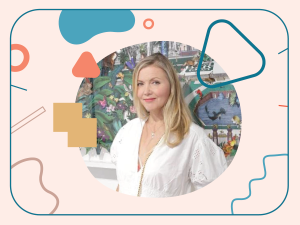
May 17, 2023
Kristjana Williams is a London-based Icelandic artist with dyslexia. She wasn’t diagnosed until she was 25, and now she has her own studio.

May 3, 2023
Aideé Chávez Frescas has ADHD, and is a senior social media manager at Understood. Her posts help end stigma and show others they’re not alone.

April 19, 2023
Alex Gilbert is a career coach with ADHD and dyslexia. After working in leadership development for years, she started her own coaching business.
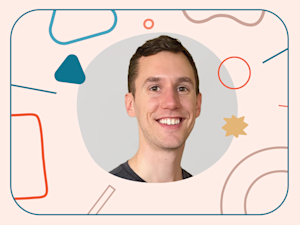
April 5, 2023
Dan Reis was diagnosed with ADHD during the pandemic. Now, he’s made it his mission to explore coping strategies to help him get his work done.
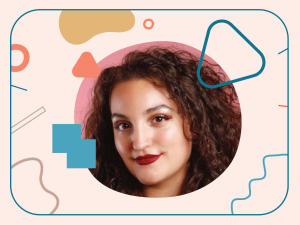
March 22, 2023
Rachel Basoco’s two jobs keep things interesting for her ADHD. She works full time at Fidelity, and part time at 11:11 Media, Paris Hilton’s company.
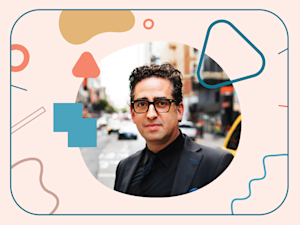
March 8, 2023
Gil Gershoni says that everything he does is dyslexic. He founded the branding firm Gershoni Creative and hosts the Dyslexic Design Thinking podcast.
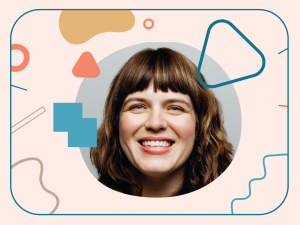
February 22, 2023
Claire Odom is a psychotherapist with ADHD. She’s also a disability inclusion consultant who has advice on navigating the workplace.

